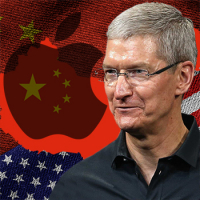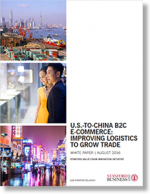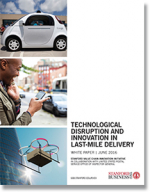U.S.-To-China B2c E-Commerce: Improving Logistics to Grow Trade
Merchants should carefully design their logistics strategy to promote the greatest efficiency and profits while addressing customers’ expectations and needs, based on factors such as their product mix, target geography, demographic segment, product price points, returns strategy, and more.
The global e-commerce retail market continues to grow at a rapid pace.
Increasingly, e-commerce is taking place across borders as consumers become more interested in the global marketplace.
The U.S.-to-China business-to-consumer (B2C) e-commerce market, a large and expanding trade corridor, presents a sizable opportunity for U.S. merchants and logistics providers to expand their business.
The Chinese government has encouraged the growth of B2C e-commerce imports as part of its efforts to move towards a consumption-based economy.
The government has issued several policies targeted at reducing logistics frictions, streamlining customs clearance, and simplifying the related tax regulations.
Among other things, the government initiatives have resulted in the establishment of dedicated cross-border e-commerce pilot zones and free trade zones, of which several Chinese online marketplaces, as well as many foreign merchants, have taken advantage.
Several other developments in recent years have helped streamline B2C imports into China.
Key among them are the establishment of several Chinese cross-border online platforms, which are growing in popularity; advancements in local logistics networks; and the formation of cross-border logistics alliances.
There is an opportunity for overseas merchants to take advantage of trading platforms and logistics networks to improve the efficiency of deliveries, contain costs, improve order visibility, streamline the returns process, and make the overall shopping experience more convenient for the customer.
China’s growing cross-border e-commerce market provides an exciting opportunity for overseas merchants looking to expand their business.
Ultimately, merchants who deploy logistics models that provide consumers with the global selection they desire and the ability to conveniently receive goods at the desired quality, time, and price point will be poised to spur the growth of sales from the United States to China, and in other important trade corridors.
Conclusion
The growth of U.S.-to-China B2C sales has been spurred both by deliberate government policy as well as innovation from e-commerce platforms and logistics providers both within and outside of China. Logistics models are continuing to evolve, with merchants leveraging free trade zones and cross-border e-commerce zones, as well as private logistics networks and cross-border logistics alliances, to facilitate business.
Following the rise of Cainiao and other retail-operated logistics networks, we may continue to see examples of merchants taking greater control of the end-to-end logistics process in new collaborative ways that leverage data analytics.
Merchants should carefully design their logistics strategy to promote the greatest efficiency and profits while addressing customers’ expectations and needs, based on factors such as their product mix, target geography, demographic segment, product price points, returns strategy, and more.
Those who successfully navigate the logistics networks in the U.S.-to-China corridor stand to benefit from the growing opportunities in the China consumer economy.
What’s Related




Favorites





